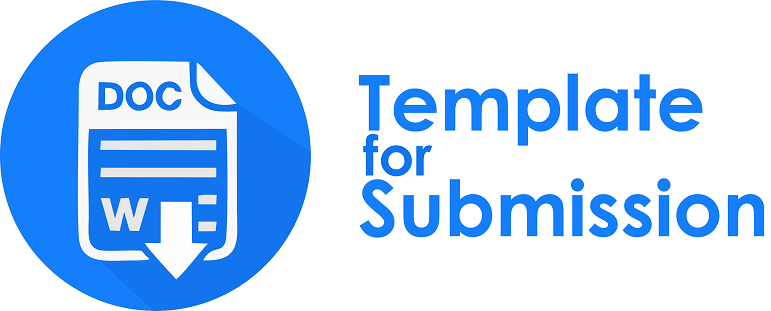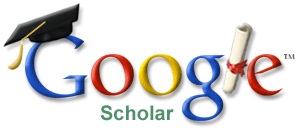The Role of Social Capital, Innovation, and Capabilities on MSMEs’ Resilience in Economic Hard Times
Abstract
Research aims: As the dust of the COVID-19 pandemic settles, one apparent theme of the resulting economic crisis is uncertainties. The uncertainties especially hurt the MSMEs, which often possess limited organizational resources and capabilities. Referred to the ability to evolve as the environments do, resilience has been seen as a mantra for MSMEs’ survival and success. The purpose of the current study is twofold. Firstly, this study seeks to examine the effect of innovation, resource capability, and social capital on the resilience of MSMEs in Indonesia. Secondly, this study is aimed to examine the relationship between company performance and resilience.
Design/Methodology/Approach: Employing a quantitative approach, hypothesis testing utilized Partial Least Square (PLS) data analysis techniques with the SmartPLS 3.0 program. The population in the current inquiry was MSMEs owned by families in Solo Raya, Indonesia. The number of MSMEs involved was 215 MSMEs owned by families.
Research findings: Resource capability, innovation, and social capital were found to positively influence the performance of MSMEs, which in turn affected the resilience of MSMEs.
Theoretical contribution/Originality: The research findings provide a business resilience construct in third-world, grassroots enterprises where social and cultural factors dominate.
Practitioner/Policy implication: Governmental programs, such as exhibitions or workshops, aimed at strengthening MSMEs’ social capital and internal capabilities and cultivating innovation culture are encouraged to assist MSMEs’ survival during economic hardships.
Research limitation/Implication: This study only focused on MSMEs in the Greater Solo Region of Central Java, Indonesia, during the COVID-19 pandemic. Further studies thus are encouraged to test the results in other economic and cultural settings.
Keywords
Full Text:
PDFReferences
Adler, P. S., & Kwon, S.-W. (2002). Social Capital: Prospects for a New Concept. Academy of Management Review, 27(1), 17–40. https://doi.org/10.5465/amr.2002.5922314
Au, K., & Kwan, H. K. (2009). Start–Up Capital and Chinese Entrepreneurs: The Role of Family. Entrepreneurship Theory and Practice, 33(4), 889–908. https://doi.org/10.1111/j.1540-6520.2009.00331.x
Ayala, J.-C., & Manzano, G. (2014). The resilience of the entrepreneur. Influence on the success of the business. A longitudinal analysis. Journal of Economic Psychology, 42, 126–135. https://doi.org/10.1016/j.joep.2014.02.004
Azmy, A., & Priyono, A. (2022). Leadership Roles For Improving Employee Productivity at Digital Start-Up Company. Jurnal Manajemen Bisnis, 13(1), 16–27. https://doi.org/10.18196/mb.v13i1.11250
Barney, J. (1991). Firm Resources and Sustained Competitive Advantage. Journal of Management, 17(1), 99–120. https://doi.org/10.1177/014920639101700108
Barney, J. B. (1986). Organizational Culture: Can It Be a Source of Sustained Competitive Advantage? Academy of Management Review, 11(3), 656–665. https://doi.org/10.5465/amr.1986.4306261
Barney, J. B. (1995). Looking inside for competitive advantage. Academy of Management Perspectives, 9(4), 49–61. https://doi.org/10.5465/ame.1995.9512032192
Boin, A., & van Eeten, M. J. G. (2013). The Resilient Organization. Public Management Review, 15(3), 429–445. https://doi.org/10.1080/14719037.2013.769856
Bonanno, G. A. (2004). Loss, Trauma, and Human Resilience: Have We Underestimated the Human Capacity to Thrive After Extremely Aversive Events? American Psychologist, 59(1), 20–28. https://doi.org/10.1037/0003-066x.59.1.20
Bourdieu, P. (1986). The Forms of Capital. Readings in Economic Sociology, 280–291. https://doi.org/10.1002/9780470755679.ch15
Channa, N. A., Shah, S. M. M., & Ghumro, N. H. (2019). Uncovering the Link between Strategic Human Resource Management and Crisis Management: Mediating Role of Organizational Resilience. Annals of Contemporary Developments in Management & HR, 1(2), 15–27. https://doi.org/10.33166/acdmhr.2019.02.003
Chin, W. W. (1998). Commentary: Issues and Opinion on Structural Equation Modeling. MIS Quarterly, 22(1), 7–16. Retrieved from http://www.jstor.org/stable/249674
Chin, W. W. (1998). The partial least squares approach for structural equation modeling. In G. A. Marcoulides (Ed.), Modern methods for business research (295–336). Lawrence Erlbaum Associates Publishers.
Damanpour, F., & Gopalakrishnan, S. (2001). The Dynamics of the Adoption of Product and Process Innovations in Organizations. Journal of Management Studies, 38(1), 45–65. https://doi.org/10.1111/1467-6486.00227
Davidsson, P., & Honig, B. (2003). The role of social and human capital among nascent entrepreneurs. Journal of Business Venturing, 18(3), 301–331. https://doi.org/10.1016/s0883-9026(02)00097-6
Dess, G., McNamara, G., Eisner, A., & Lee, S. H. (2019). Strategic management: Text and cases. McGaw-Hill.
Duchek, S. (2017). Entrepreneurial resilience: a biographical analysis of successful entrepreneurs. International Entrepreneurship and Management Journal, 14(2), 429–455. https://doi.org/10.1007/s11365-017-0467-2
Duchek, S. (2019). Organizational resilience: a capability-based conceptualization. Business Research, 13(1), 215–246. https://doi.org/10.1007/s40685-019-0085-7
Dyer L. (2011). Critical thinking for business students (2nd Ed.). Captus Press.
Dyer, W. G. (2006). Examining the “Family Effect” on Firm Performance. Family Business Review, 19(4), 253–273. https://doi.org/10.1111/j.1741-6248.2006.00074.x
Edmeade, J. N., & Buzinde, C. N. (2021). The role of educators in community resilience in natural disaster-prone communities. Community Development Journal, 57(3), 411–429. https://doi.org/10.1093/cdj/bsab010
El Dessouky, N., & Al-Ghareeb, A. (2020). Human Resource Management and Organizational Resilience in The Era of COVID-19: Theoretical Insights, Challenges and Implications. 2020 Second International Sustainability and Resilience Conference: Technology and Innovation in Building Designs(51154). https://doi.org/10.1109/ieeeconf51154.2020.9319967
Ettlie, J. E., & Rosenthal, S. R. (2011). Service versus Manufacturing Innovation*. Journal of Product Innovation Management, 28(2), 285–299. https://doi.org/10.1111/j.1540-5885.2011.00797.x
Fatoki, O. (2018). The Impact of Entrepreneurial Resilience on the Success of Small and Medium Enterprises in South Africa. Sustainability, 10(7), 2527. https://doi.org/10.3390/su10072527
Fisher, R., Maritz, A., & Lobo, A. (2016). Does individual resilience influence entrepreneurial success. Swinburne Research Bank. Retrieved from http://hdl.handle.net/1959.3/433970
Folke, C. (2016). Resilience (Republished). Ecology and Society, 21(4). https://doi.org/10.5751/es-09088-210444
Gartner, W. B. (1985). [Review of Competitive Strategy; Competitive Advantage, by M. E. Porter & M. E. Porter]. The Academy of Management Review, 10(4), 873–875. https://doi.org/10.2307/258056
Gudmunson, C. G., & Danes, S. M. (2013). Family Social Capital in Family Businesses: A Stocks and Flows Investigation. Family Relations, 62(3), 399–414. https://doi.org/10.1111/fare.12017
Hedner, T., Abouzeedan, A., & Klofsten, M. (2011). Entrepreneurial resilience. Annals of Innovation & Entrepreneurship, 2(1), 7986. https://doi.org/10.3402/aie.v2i1.6002
Hogan, S. J., & Coote, L. V. (2014). Organizational culture, innovation, and performance: A test of Schein’s model. Journal of Business Research, 67(8), 1609-1621. https://doi.org/10.1016/j.jbusres.2013.09.007
Hutchinson, K. (2020). Four techniques for developing your leadership ‘muscle.’ Chartered Management Institute. Retrieved from https://www.managers.org.uk/knowledge-and-insights/article/four-techniques-for-developing-your-leadership-muscle/
Hutchinson, K., Fergie, R., Fleck, E., Jouflas, G., & Parry, Z. (2021). Flexing the Leadership Muscle: An International Study of Entrepreneurial Resilience in Rural Communities During the COVID-19 Pandemic. Journal of Small Business Strategy, 31(4), 100–112. https://doi.org/10.53703/001c.29484
Jenatabadi, H. S. (2015). An Overview of Organizational Performance Index: Definitions and Measurements. SSRN Electronic Journal. https://doi.org/10.2139/ssrn.2599439
Kerr, S. E. (2018). Social Capital as a Determinant of Resilience. Resilience, 267–275. https://doi.org/10.1016/b978-0-12-811891-7.00022-0
Lv, W.-D., Tian, D., Wei, Y., & Xi, R.-X. (2018). Innovation Resilience: A New Approach for Managing Uncertainties Concerned with Sustainable Innovation. Sustainability, 10(10), 3641. https://doi.org/10.3390/su10103641
Mayer, R. C., Davis, J. H., & Schoorman, F. D. (1995). An Integrative Model Of Organizational Trust. Academy of Management Review, 20(3), 709–734. https://doi.org/10.5465/amr.1995.9508080335
Mukharomah, W., Soepatini, S., & Praswati, A. N. (2017). Pengaruh Perceived Desirability dan Perceived Feasibility Terhadap Entrepreneurial Intention. Proceeding 6th University Research Colloquium 2017: Seri Humaniora, Sosial, dan Agama. Retrieved from https://journal.unimma.ac.id/index.php/urecol/article/view/1347
Mullins, L. J. (2001). Hospitality Management and Organisational Behavior. 4th Ed. Pearson/Longman, Harlow.
Nahapiet, J., & Ghoshal, S. (1998). Social Capital, Intellectual Capital, and the Organizational Advantage. The Academy of Management Review, 23(2), 242. https://doi.org/10.2307/259373
Ngoc Su, D., Luc Tra, D., Thi Huynh, H. M., Nguyen, H. H. T., & O’Mahony, B. (2021). Enhancing resilience in the Covid-19 crisis: lessons from human resource management practices in Vietnam. Current Issues in Tourism, 24(22), 3189–3205. https://doi.org/10.1080/13683500.2020.1863930
Nizamidou, C., & Vouzas, F. (2020). HR professionals cultivating resilience and crisis awareness toward a business excellence environment. EuroMed Journal of Business, 16(4), 399–415. https://doi.org/10.1108/emjb-12-2019-0150
Nuryakin, N. (2022). Green Product Innovation, Green Process Innovation, and its Impact on Green Performance of Batik SMEs. Benefit: Jurnal Manajemen dan Bisnis, 7(1), 1-8. https://doi.org/10.23917/benefit.v7i1.18132
Prayag, G., Spector, S., Orchiston, C., & Chowdhury, M. (2019). Psychological resilience, organizational resilience and life satisfaction in tourism firms: insights from the Canterbury earthquakes. Current Issues in Tourism, 23(10), 1216–1233. https://doi.org/10.1080/13683500.2019.1607832
Putnam, R. D. (2001). Social capital: Measurement and consequences. Canadian Journal of Policy Research, 2, 41-51.
Reddy, G. , & Reddy.S., V. (2014). Significance of Innovation in Business Process of Value Chain. Journal of Behavioural Economics, Finance, Entrepreneurship, Accounting and Transport, 2(1), 18-25. Retrieved from http://pubs.sciepub.com/jbe/2/1/3/index.html#
Rodríguez-Sánchez, A., Guinot, J., Chiva, R., & López-Cabrales, Á. (2019). How to emerge stronger: Antecedents and consequences of organizational resilience. Journal of Management & Organization, 27(3), 442–459. https://doi.org/10.1017/jmo.2019.5
Rosenbusch, N., Brinckmann, J., & Bausch, A. (2011). Is innovation always beneficial? A meta-analysis of the relationship between innovation and performance in SMEs. Journal of Business Venturing, 26(4), 441–457. https://doi.org/10.1016/j.jbusvent.2009.12.002
Rosyadi, I. (2014). Strategi Pengembangan Usaha Mikro Milik Mahasiswa. Benefit: Jurnal Manajemen dan Bisnis, 17(2), 111-122. Retrieved from https://journals.ums.ac.id/index.php/benefit/article/view/1385
Salvato, C., & Melin, L. (2008). Creating Value Across Generations in Family-Controlled Businesses: The Role of Family Social Capital. Family Business Review, 21(3), 259–276. https://doi.org/10.1177/08944865080210030107
Schooler, C. (1983). [Review of Culture’s Consequences: International Differences in Work-Related Values, by G. Hofstede]. Contemporary Sociology, 12(2), 167–167. https://doi.org/10.2307/2066725
Setiaji, B., Nofrandila, N., Maulana, H., & Nashir, H. (2019). The Life of The Old: Prior to National Welfare Program. Humanities & Social Sciences Reviews, 7(4), 845–851. https://doi.org/10.18510/hssr.2019.74112
Setiawati, C., & Ahdiyawati, S. (2021). Kompetensi Kewirausahaan Para Knitting Entrepreneur Terhadap Kinerja Usaha (Kasus pada Sentra Industri Rajut Binong Jati Bandung). Benefit: Jurnal Manajemen dan Bisnis, 6(1), 25-40. Retrieved from https://journals.ums.ac.id/index.php/benefit/article/view/14086
Setyawan, A. A., Isa, M., Wajdi, F. M., Syamsudin, & Nugroho, S. P. (2015). An Assessment of SME Competitiveness in Indonesia. Journal of Competitiveness, 7(2), 60–74. https://doi.org/10.7441/joc.2015.02.04
Setyawan, A., Mudhofar, F., Arum, Y., Susila, I., & Nasir, M. (2022). Strategic Partnership between SME Retailers and Modern Suppliers in Indonesia: A Relationship Marketing Approach. Organizations and Markets in Emerging Economies, 13(2), 317–335. https://doi.org/10.15388/omee.2022.13.82
Sirmon, D. G., & Hitt, M. A. (2003). Managing Resources: Linking Unique Resources, Management, and Wealth Creation in Family Firms. Entrepreneurship Theory and Practice, 27(4), 339–358. https://doi.org/10.1111/1540-8520.t01-1-00013
Steele, C. M., Spencer, S. J., & Lynch, M. (1993). Self-image resilience and dissonance: The role of affirmational resources. Journal of Personality and Social Psychology, 64(6), 885–896. https://doi.org/10.1037/0022-3514.64.6.885
Stokes, P., Smith, S., Wall, T., Moore, N., Rowland, C., Ward, T., & Cronshaw, S. (2018). Resilience and the (micro-)dynamics of organizational ambidexterity: implications for strategic HRM. The International Journal of Human Resource Management, 30(8), 1287–1322. https://doi.org/10.1080/09585192.2018.1474939
Storey, C., & Kahn, K. B. (2010). The Role of Knowledge Management Strategies and Task Knowledge in Stimulating Service Innovation. Journal of Service Research, 13(4), 397–410. https://doi.org/10.1177/1094670510370988
Sulastri, S., Mulyadi, H., Disman, D., & Hendrayati, H. (2021). SMEs Resilience During the Covid-19 Pandemic: A Case Study in Indonesia. Proceedings of the 5th Global Conference on Business, Management and Entrepreneurship (GCBME 2020). https://doi.org/10.2991/aebmr.k.210831.138
Ungar, M., Brown, M., Liebenberg, L., Othman, R., Kwong, W. M., Armstrong, M., & Gilgun, J. (2007). Unique pathways to resilience across cultures. Adolescence, 42(166), 287–310.
Verbeke, A., & Kano, L. (2010). Transaction Cost Economics (TCE) and the Family Firm. Entrepreneurship Theory and Practice, 34(6), 1173–1182. https://doi.org/10.1111/j.1540-6520.2010.00419.x
Villena, V. H., Revilla, E., & Choi, T. Y. (2010). The dark side of buyer-supplier relationships: A social capital perspective. Journal of Operations Management, 29(6), 561–576. https://doi.org/10.1016/j.jom.2010.09.001
Wang, J., Hutchins, H. M., & Garavan, T. N. (2009). Exploring the Strategic Role of Human Resource Development in Organizational Crisis Management. Human Resource Development Review, 8(1), 22–53. https://doi.org/10.1177/1534484308330018
Yukl, G. (2008). How leaders influence organizational effectiveness. The Leadership Quarterly, 19(6), 708–722. https://doi.org/10.1016/j.leaqua.2008.09.008
Zahra, S. A. (2006). An embeddedness framing of governance and opportunism: towards a cross-nationally accommodating theory of agency-critique and extension. Journal of Organizational Behavior, 28(1), 69–73. https://doi.org/10.1002/job.404
Zautra, A.J., Hall, J.S., & Murray, K.E. (2010). Resilience: A new definition of health for people and communities. In J.R. Reich, A.J. Zautra, & J.S. Hall (Eds). Handbook of Adult Resilience (3-30). New York: Guilford.
DOI: https://doi.org/10.18196/mb.v14i1.15887
Refbacks
- There are currently no refbacks.
Copyright (c) 2023 Kussudyarsana Kussudyarsana, Huda Kurnia Maulana, Muhammad Halim Maimun, Budi Santoso, Munajat Tri Nugroho

This work is licensed under a Creative Commons Attribution-ShareAlike 4.0 International License.
Office:
Ruang Jurnal Manajemen Bisnis,
Gedung Ki Bagus Hadikusuma (E4) Lantai 2, Kampus Terpadu Universitas Muhammadiyah Yogyakarta,
Jalan Brawijaya (Lingkar Selatan), Tamantirto, Kasihan, Bantul, Daerah Istimewa Yogyakarta, Indonesia, 55183
Website: journal.umy.ac.id/index.php/mb - E-mail: mabis@umy.ac.id
Phone: +62 274 387 656 (ext: 118)
Jurnal Manajemen Bisnis is licensed under Creative Commons Attribution-ShareAlike 4.0 International (CC BY-SA 4.0)








